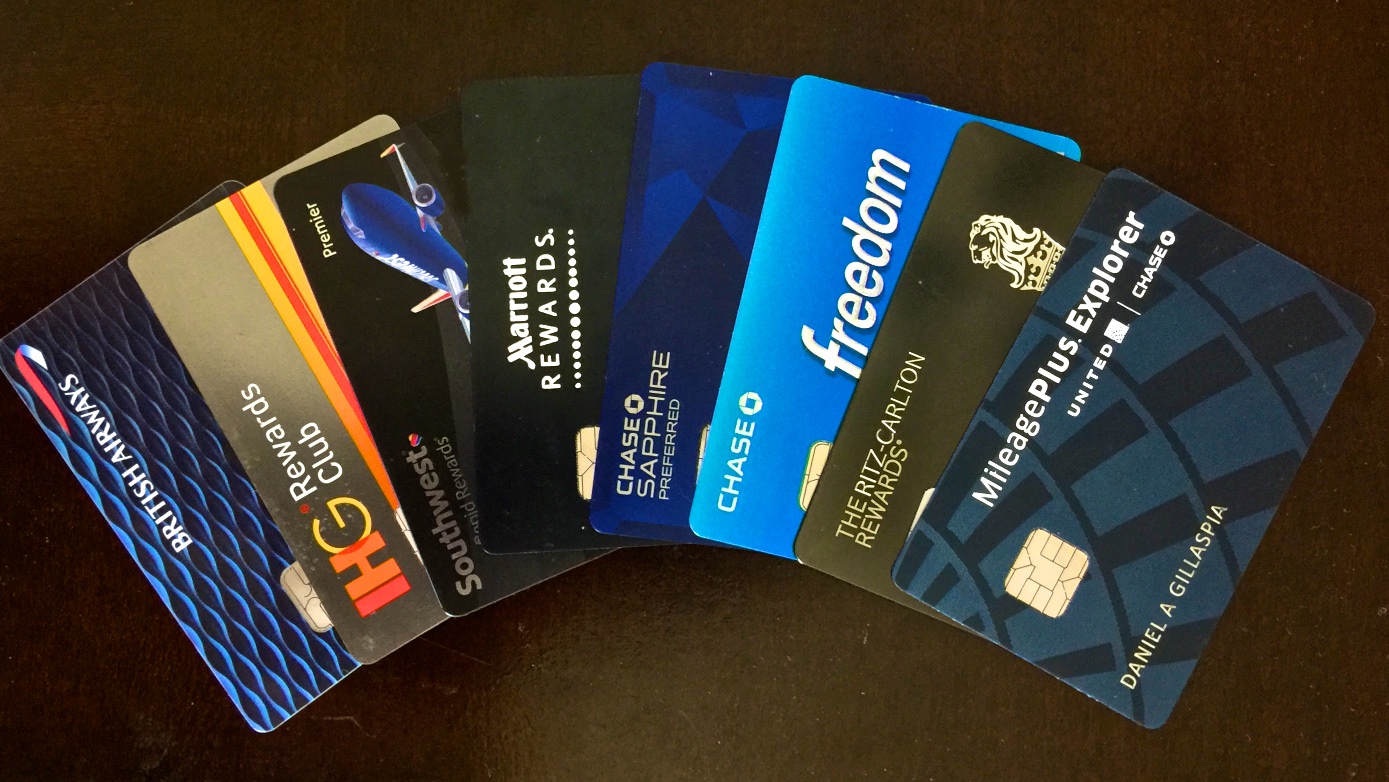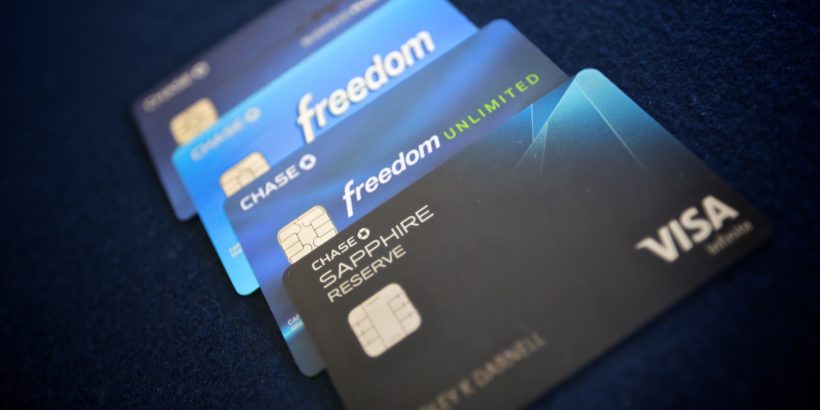Some credit card issuers, such as American Express will limit you to a specific number of credit cards that you can have. Meanwhile other banks don’t have a firm cut-off. Either way, it’s very important to know the limitations for each issuer so you can avoid denials and maximize your points strategy. This article will answer the question: how many Chase cards can you have?
Update: Some offers are no longer available — click here for the latest deals!
How many Chase cards can you have?
There is no firm limit on how many Chase credit cards you can have. Instead, it’s usually limited by your income, credit history, and relationship with Chase.
I’ve known people who have had over 10 Chase credit cards but that was pre 5/24 (more on that below). Ever since Chase tightened up on approving applicants, it seems that most people in general tend to max out around six to seven Chase credit cards.

Chase application rules
One major reason people don’t get approved for so many chase cards anymore is that there are more restrictions for getting approved for certain credit cards.
Chase now has several credit card application rules that you should definitely know about before you apply for Chase credit cards. Those rules can also affect how many cards you end up getting from Chase.
For example, Chase won’t approve you for certain cards if you’ve opened up 5 or accounts in the past two years.
This “5/24 Rule” applies to the following cards (with certain exceptions):
- Chase Sapphire Reserve
- Chase Sapphire Preferred
- Chase Freedom cards
- Chase Slate
- Chase Ink Preferred
- Chase Ink Cash
- Chase Marriott Rewards Card (only personal)
- Chase Southwest cards
- Chase United cards
So if you were over 5/24, you’d more than likely not be able to get any of those cards. You can click here, to read more about the different types of Chase credit card application rules.
Income’s effect on Chase card approvals
Nobody knows for sure, but many speculate that Chase limits its customers to a total credit limit of around 40% to 60% of your stated income. So, for example, if your stated income is $100K a year, you can expect to start having issues with getting more credit when you have around $50,000 of total credit lines (counting all Chase credit cards).
I know that Chase can grant you credit even higher than 60% of your income, but the 40% to 60% figure is the ballpark range where you will likely start to struggle to get approved for more credit from Chase.
If you’ve been approved for business credit cards, you probably have a better shot at getting more credit than this. At the same time, if you’ve got a weaker credit history don’t be surprised if you’re not even able to get credit lines up to 50% of your stated income. In that case, it’s best to focus on building up a good relationship with Chase first and then worry about additional credit cards.
There may also be a cap of total credit allowed at around $100,000 but there are little data points to extract any meaningful data from for that theory.
How to know when you’ve hit the max credit allowed by Chase
You’ll know you’ve hit the maximum credit allowed to you by Chase when your credit card applications start going to pending. After you no longer receive automatic approvals, there’s a very good chance that you’ve hit your ceiling with Chase.
Unless you start making more money at that time, you’re going to probably need to shift around credit or close credit lines to get approved.
Shifting Chase credit lines around
Shifting your credit lines around is one of the easiest ways to deal with this situation. After your application goes to pending or even after you get denied, you’ll need to call into Chase reconsideration. (Click here to read about everything you need to know about Chase reconsideration.)
During that phone call, you’ll be able to request that credit be transferred from your current credit lines to the new credit line. You’ll usually need to leave at least $500 on a credit line when initiating the transfer. The transfer will be instant in most cases and Chase is usually pretty good about honoring your request.
Lowering credit lines
Another approach you can take is to lower your credit lines before you ever apply.
The theory is that since Chase already approved you for a specific amount of credit, once you lower that credit, Chase will then approve you once again.
The risk for this is that other factors could come into play that lead to a rejection. For example, maybe now you have so many new hard inquiries that you won’t get approved for more credit. In that case your credit utilization could take a hit.
Lowering your credit lines could also potentially complicate any plans to shift credit around between cards since you’ll have less breathing room.
Closing credit lines
Another approach is just to outright cancel your credit cards.
This method will not allow you to continue to age your credit accounts and could increase your utilization, both of which could end up hurting your credit score. So you need to be very mindful of how closing a credit line will affect your score.
Still, sometimes you need to close an account. For example, maybe you have six Chase credit cards and you feel that applying for more than cards from Chase will just look silly or like you’re abusing their rewards. If that’s the case then it can make sense to close the card.
Just make sure that you’ve read all of the Chase application rules that are linked near the top of this article. Because if you don’t know about those, you might cancel a card that you will no longer be able to get!
Final word on the max number of Chase cards
Ultimately, there is no strict limit on the number of Chase credit cards you are allowed. However, there are strong indicators that your income plays a major role in dictating how many cards you can have. In addition, the different Chase credit card application rules will often limit the number of Chase cards available to you.
Daniel Gillaspia is the Founder of UponArriving.com and the credit card app, WalletFlo. He is a former attorney turned travel expert covering destinations along with TSA, airline, and hotel policies. Since 2014, his content has been featured in publications such as National Geographic, Smithsonian Magazine, and CNBC. Read my bio.

